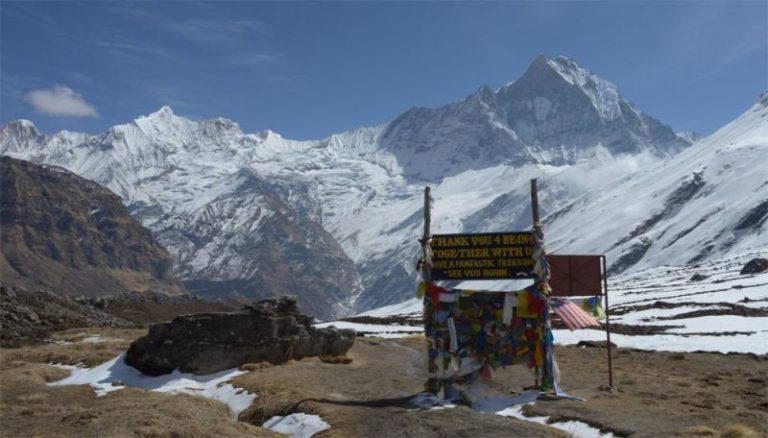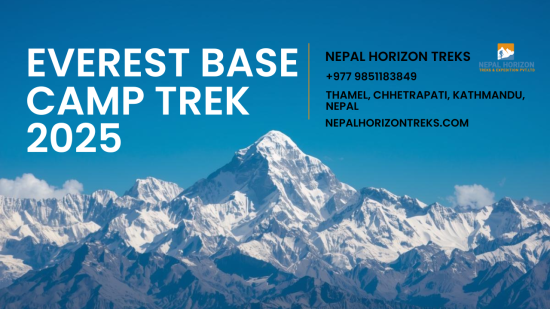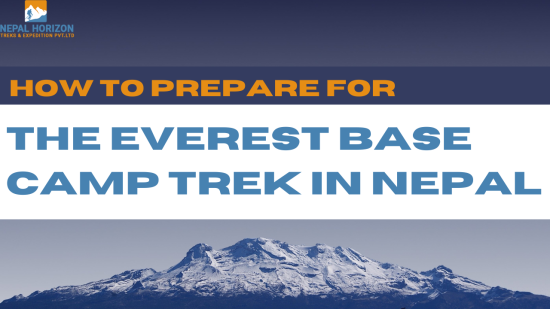Best Season for Annapurna Trekking
21st December 2019

Every local of the Annapurna Trekking Route welcomes you with warm gratitude and love. Moreover, while trekking through the lush forests of Rhododendron, Oak and Pines, a trekker can explore rare Himalayan wild animals and beautiful bird species. This trek is an ideal option for peoples who love exploring immense natural beauties along with cultural heritages. And also, novice trekkers who fear to complete Everest Region Trekking but have keen desire to explore the high Himalayas of Nepal can join this trek. If you are planning for trekking to Annapurna Region, you must know about the seasons in Nepal to make a right decision and to enjoy the fullest. Below we have written short descriptions about all the seasons in Nepal. Read it once and visit Nepal in your desired season. Which Climate to Choose? The best time for your trek depends on how you wish to trek and what you wish to view during Annapurna Trekking. For your ease here we have included some seasonal characteristics and pros and cons of Annapurna Region Trekking.
Spring Season (March, April and May)
Climatic Condition The weather during spring around Annapurna is delightful. This is the second peak season for Annapurna Region Trekking after Monsoon. You can observe the route of Annapurna Sanctuary Trekking covered with thriving Rhododendrons and many other wild flowers. The downside fog might obscure the mountains however it is possible to trek up. Sceneries during spring season Spring offers clear weather with rewarding views of Annapurna and Dhaulagiri Ranges along with the lush forests blanketed with blooming Rhododendrons and truly inspiring climate. Clothing for spring Woolen Jackets (you might need them during night time and early morning), and light clothes for warm days. Festivals A trekker will get a chance to explore the great Tiji Festival in the upper Mustang and a dance performance of Monks in Mustang during this season.
Summer Season (June, July and August)
Climatic Condition Summer is known as monsoon in Nepal. The lowlands of Nepal continuously get rainfall while the rain gets lessen at the higher elevations with the comparatively cool climate. The lower regions of Nepal get hot with sizzling temperature. Due to the torrential downpour, landslides and leeches make the trekking in Annapurna very difficult (nearly impossible). IF you are thinking of flight in domestic airfare from Kathmandu to Pokhara, the flight may be disturbed (delay or even cancelled) due to heavy rainfall. This is the ideal season for solo trekking lovers and the zoologists and botanists. Though there will be heavy rainfall, the views of mountain ranges are tantalizing while rain stops. So, if you endure some rainfall in certain regions, spring is the best seasons for you. Sceneries in summer The lush forests are decorated with blooming flowers and the leaves get dark green. This is the ideal season for botanists, as the surrounding hills are full of lush vegetation with numerous flora species. Because of the least crowded route, one can observe wilderness trekking in this season. Though everything looks bright during daylight, it might be too hazy for photography. Clothing for summer You have to bring sunglasses and hat to protect yourself from extreme sunlight, windproof and rainproof clothes to stay away from rain. Also bring umbrella, though it may be useless while trekking in steep terrains. Festivals that falls during summer You can explore the famous Yartung Mela in Muktinath valley during this season on the full moon day (July- August) in shrawan. Literally Yartung mela means festival to send off summer.
Autumn (September, October and November)
Climatic Conditions during Autumn Season Autumn is considered as the best trekking season in Nepal. All the routes of Annapurna Region like Annapurna Base Camp Trekking, Ghorepani Poonhill trekking or Annapurna Circuit Trekking sees huge number of trekkers during autumn. The weather is pleasant with tolerable temperatures even in the higher elevations. This is the peak season for Annapurna Trekking so it’s better to book a trip in advance. Sceneries during autumn The climate is very pleasant and so are the scenarios. This is the perfect time of the year to explore the surrounding when everything is rejuvenated, refreshed and vibrant. You can explore the astonishing views of Annapurna I, Annapurna II, Annapurna III and IV along with the Dhaulagiri Ranges and many other snow capped mountains. Although the weather remains mild, sometimes grooving clouds creates difficulties in viewing Himalayas. Clothing for autumn You need woolen jackets as it gets cooler in higher elevations. And other normal gears as you need during other trekking. Festivals This is the season when greatest festivals of Hindus falls. One can explore Dashain followed by Tihar during autumn season.
Winter (December, January and February)
Climatic Condition in winter Annapurna Region Trekking reaches an altitude of 5,461 meters at Thorong La Pass and touches Tibetan plateau, the weather in this altitude during winter is freezing cold. You might encounter snowfalls in higher Himalayas. This season is less preferred season for highest elevation like Annapurna Base Camp , Annapurna Base Camp Short Trekking and Annapurna Circuit Trekking but the short hikes like Ghorepani Poonhill Sunrise Trekking are possible. Winter adds adventure to your trekking and the trails are least crowded which offers you a chance to experience wilderness trekking in Annapurna Region. Sceneries during winter Because of the snowfall in the Himalayas, the glorious mountains are at its best offering you the rewarding vistas. You may encounter the peoples migrating from higher altitudes to lower elevation during early winter season. Clothing Because, the climate is extremely cold during winter we recommend you to pack all the warm gears to keep yourself warm in cold days and colder nights. Festivals during winter The famous festivals Tamu Lhosar falls during this season. Also in the low lands Christmas is celebrated. Another famous festival Maghe Sankranti also falls during winter season. During these festivals you can explore the Nepalese culture more closely.
Recent From Blogs

28th October 2025

25th October 2025

24th October 2025

18th October 2025

14th October 2025

12th October 2025

10th October 2025

7th October 2025






